Summit Avenue-Edward Neill was the owner of the first house on Summit Avenue. The architects were Clarence Johnston, Leroy Buffington and many others. The styles were colonial, classical and bungalow/craftsmen. I wasn't there, so I didn't have a favorite house. I didn't know anything about the houses or Summit Avenue so everything I read was what I learned!
Stephanieweber
Thursday, May 14, 2015
Field trip
James J. Hill House- The owner of this house was James J Hill. In 1983 the depression caused the collapse of many industries. James stayed wealthy and joined with J. P. Morgan to buy the Northern Pacific Railroad. He lived in the house with his family and servants. The architect was Peabody and Stearns.
Summit Avenue-Edward Neill was the owner of the first house on Summit Avenue. The architects were Clarence Johnston, Leroy Buffington and many others. The styles were colonial, classical and bungalow/craftsmen. I wasn't there, so I didn't have a favorite house. I didn't know anything about the houses or Summit Avenue so everything I read was what I learned!



Summit Avenue-Edward Neill was the owner of the first house on Summit Avenue. The architects were Clarence Johnston, Leroy Buffington and many others. The styles were colonial, classical and bungalow/craftsmen. I wasn't there, so I didn't have a favorite house. I didn't know anything about the houses or Summit Avenue so everything I read was what I learned!
Wednesday, April 22, 2015
Client profile.


I chose this house because it had a three car garage. One space could be for the car, one could be for the motorcycle and one for extra stuff like bikes or rakes. It had three bedrooms one for each women living in the house, The women dating could have the master because her boyfriend spends lots of time at the house (Kimberly). Arlene and Annette could each have their own bedroom because Arlene needs her own space for doing her hair and make-up. The house had lots of living space which would be good for Annette because she likes to have parties. Kimberly could use the office to study and her boyfriend could use it to grade his papers.
Thursday, April 9, 2015
rhythem
This week in Interior Design we learned about rhythm.There are three types of rhythm, the first one is repetition. Repetition is used by repeating any element of design such as line, color or texture.
 This picture uses the repetition of lines on the wall.
This picture uses the repetition of lines on the wall.
 This pictures shows repetition in the colors. The walls and chairs are blue and then green is used in the fruit and plants.
This pictures shows repetition in the colors. The walls and chairs are blue and then green is used in the fruit and plants.
The second type of rhythm is radiation. It gives the room a circular or sweeping movement.
 It can be used on a larger scale, such as ina whole room. The steps in the room give it the circular feeling.
It can be used on a larger scale, such as ina whole room. The steps in the room give it the circular feeling.
 It can also be used on a smaller scale such as in furniture. In this picture the example would be the light fixture and the bottom of the table.
It can also be used on a smaller scale such as in furniture. In this picture the example would be the light fixture and the bottom of the table.
The third type of rhythm would e gradation. Gradation is the change in size in objects from large to small or colors light to dark.
 This pictures shows gradation in the use of color. The color starts light and gets darker at the bottom.
This pictures shows gradation in the use of color. The color starts light and gets darker at the bottom.
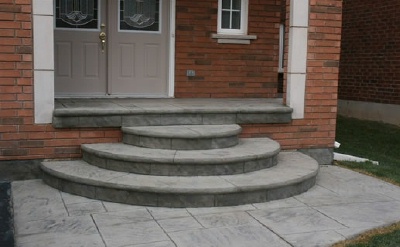 This picture uses gradation in the use of size. The steps start small and get larger as they go down.
This picture uses gradation in the use of size. The steps start small and get larger as they go down.
 This picture uses the repetition of lines on the wall.
This picture uses the repetition of lines on the wall. This pictures shows repetition in the colors. The walls and chairs are blue and then green is used in the fruit and plants.
This pictures shows repetition in the colors. The walls and chairs are blue and then green is used in the fruit and plants.The second type of rhythm is radiation. It gives the room a circular or sweeping movement.
 It can be used on a larger scale, such as ina whole room. The steps in the room give it the circular feeling.
It can be used on a larger scale, such as ina whole room. The steps in the room give it the circular feeling. It can also be used on a smaller scale such as in furniture. In this picture the example would be the light fixture and the bottom of the table.
It can also be used on a smaller scale such as in furniture. In this picture the example would be the light fixture and the bottom of the table.The third type of rhythm would e gradation. Gradation is the change in size in objects from large to small or colors light to dark.
 This pictures shows gradation in the use of color. The color starts light and gets darker at the bottom.
This pictures shows gradation in the use of color. The color starts light and gets darker at the bottom. This picture uses gradation in the use of size. The steps start small and get larger as they go down.
This picture uses gradation in the use of size. The steps start small and get larger as they go down.Wednesday, March 18, 2015
Color schemes
Monochromatic- Monochromatic colors are all the colors (tints, shades and tones) of a single hue. Tints are created by adding white to a color and tints and tones are created by adding a darker color such as grey or black. Blue gives this room a calm feeling. I achieved this room on Olioboard by starting with a light blue background and then added a darker shade of blue with my clock on the wall.I finished it by adding lighter chairs to have hues and tints of blue.


Analogous-Analogous colors are three colors that are next to each other on the color wheel. One of the colors will be dominant.These colors are often found in nature and are pleasing to the eye. I created this room by starting with a darker purple wall paper with a pattern then I added a lighter purple chair. For the red I did towels that give a pop of color. The color purple is sophisticated and elegant.


Split- Complementary- This color scheme is a variation of the complementary colors. It uses two colors adjacent to its complimentary.In this room I used yellow, orange and blue. I started with my wall paper it's orange with yellow, which are next to each other on the color wheel. Then for blue which is across the color wheel I did a couch. Orange gives a room an excited feeling and can increase your energy level.


Triadic- Triadic is colors that are evenly spread on the color wheel. They tend to be vibrant. To achieve this room I used green, orange and purple. These three colors are all equidistant from each other on the color wheel. My main color is white which is neutral then I added orange for excitement but green next to the bed because it's a restful color.




Analogous-Analogous colors are three colors that are next to each other on the color wheel. One of the colors will be dominant.These colors are often found in nature and are pleasing to the eye. I created this room by starting with a darker purple wall paper with a pattern then I added a lighter purple chair. For the red I did towels that give a pop of color. The color purple is sophisticated and elegant.


Split- Complementary- This color scheme is a variation of the complementary colors. It uses two colors adjacent to its complimentary.In this room I used yellow, orange and blue. I started with my wall paper it's orange with yellow, which are next to each other on the color wheel. Then for blue which is across the color wheel I did a couch. Orange gives a room an excited feeling and can increase your energy level.


Triadic- Triadic is colors that are evenly spread on the color wheel. They tend to be vibrant. To achieve this room I used green, orange and purple. These three colors are all equidistant from each other on the color wheel. My main color is white which is neutral then I added orange for excitement but green next to the bed because it's a restful color.


Tuesday, March 10, 2015
Color text questions
1) Each color has a different psychological effect on people. The color red is associated with power. danger and passion. Too much of the color could be overpowering though. Another example would be yellow, it's warm and happy. It is associated with sunlight and prosperity.
2) The color orange is hopeful, cheerful and warm. It can make a room feel energetic and happy. Green is the color of nature. It's refreshing, cool and peaceful. Green mixes well with other colors and can mean hope and good luck.Blue is cool, quiet and reserved. It is soothing and peaceful but too much can be depressing.Violet is a royal color. It's dramatic and works well with other colors. Black is associated with evil, death and mystery. /it can also add elegance or glamour. White is fresh and pure. It can make a room look crisp and livelier. It is also associated with youth and faith.
3)The secondary colors are orange, green and violet. Orange is a mixture of red and yellow. Green is a mixture of yellow and blue. Violet is a mixture of blue and red. To make the colors you would use less of the darker color and more of the lighter color to create the secondary colors.
4)The tertiary colors are yellow-green, blue-green, blue-violet, red-violet, red-orange and yellow-orange.
5) The intensity of a color refers to the brightness or dullness of a color. The middle of the color wheel shows the hues of the color. The contrast value of a color is to distinguish a color by unalike qualities.
6) Tint is when you add white to a color to make a different hue. Adding black to a hue makes the shade and adding grey produces a tone.
7) To neutralize a hue you mix compliments together.
8) Warm colors would be red and orange. Two cool colors would be blue and green.
9) The seven color harmonies are monochromatic, complimentary, split-complimentary, double-complimentary, triadic and neutral.
10) The factors that influence the way color harmonies are used in interior design are what kind of room or what feeling you want a room to have.
13) The lighting could impact your color choice because colors look different in every light. The color of your wall would look different in nature sunlight coming in your window then the light bulbs on your ceiling. To make my clients happy I would take the hue and try to change the value of it into something that they both enjoy. I might try to mix the colors or add them together in some way, like paint the wall a darker color but put up lighter decorations to pop.
2) The color orange is hopeful, cheerful and warm. It can make a room feel energetic and happy. Green is the color of nature. It's refreshing, cool and peaceful. Green mixes well with other colors and can mean hope and good luck.Blue is cool, quiet and reserved. It is soothing and peaceful but too much can be depressing.Violet is a royal color. It's dramatic and works well with other colors. Black is associated with evil, death and mystery. /it can also add elegance or glamour. White is fresh and pure. It can make a room look crisp and livelier. It is also associated with youth and faith.
3)The secondary colors are orange, green and violet. Orange is a mixture of red and yellow. Green is a mixture of yellow and blue. Violet is a mixture of blue and red. To make the colors you would use less of the darker color and more of the lighter color to create the secondary colors.
4)The tertiary colors are yellow-green, blue-green, blue-violet, red-violet, red-orange and yellow-orange.
5) The intensity of a color refers to the brightness or dullness of a color. The middle of the color wheel shows the hues of the color. The contrast value of a color is to distinguish a color by unalike qualities.
6) Tint is when you add white to a color to make a different hue. Adding black to a hue makes the shade and adding grey produces a tone.
7) To neutralize a hue you mix compliments together.
8) Warm colors would be red and orange. Two cool colors would be blue and green.
9) The seven color harmonies are monochromatic, complimentary, split-complimentary, double-complimentary, triadic and neutral.
10) The factors that influence the way color harmonies are used in interior design are what kind of room or what feeling you want a room to have.
13) The lighting could impact your color choice because colors look different in every light. The color of your wall would look different in nature sunlight coming in your window then the light bulbs on your ceiling. To make my clients happy I would take the hue and try to change the value of it into something that they both enjoy. I might try to mix the colors or add them together in some way, like paint the wall a darker color but put up lighter decorations to pop.
Thursday, February 12, 2015
Housing styles
This week in Interior Design, We are learning about housing styles. It is important to know housing styles because then you can Identify house styles.
Saltbox House- Traditionally there is a tall window faced South to capture the sun. There is a sloping roof nearly reaching the ground, this offers protection from the cold. They have pitched roofs that slope downward.

Garrison House-The second story overhangs the first story of this house. It usually has a narrow wooden clapboard siding.

Georgian House- They have classic-inspired details around the door. The roofs are pitched, Several chimneys rise from the inside. Their siding can be wood or brick.
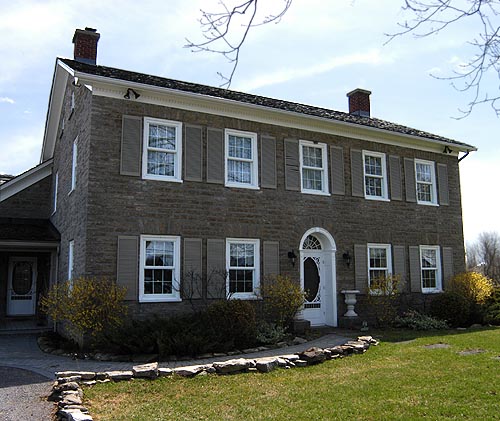
Federal Style- They have many classic details. They have low pitched roofs and windows on the lower level are taller than those above. They have a low pitched or flat roof.
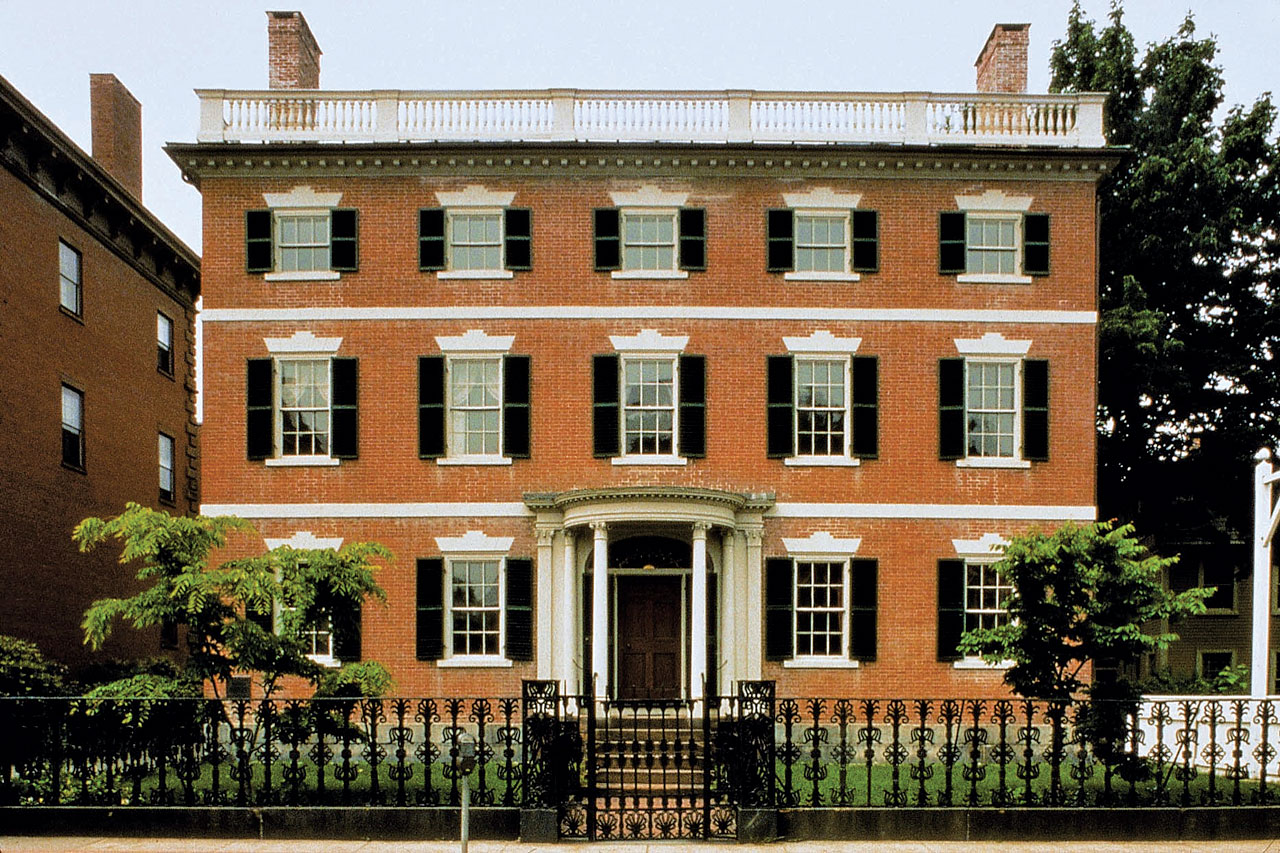
Greek Revival- They were inspired by a classic temple.

Cape Cod- These homes have steeply pitched roofs. They are normally sided with with wood shingles, but today commonly have clapboard siding.

Gothic Revival- This style was popular in the nineteenth century. The house had detail from mid evil Gothic cathedrals. They had high pitched roofs, elaborate trim and pointed arches.

Row House- These homes are built on long narrow properties. They have narrow fronts and several stories.Today they are more commonly called town homes.

Italian Villa- Quoins run run up corners of the houses. They all used classic columns of pilasters over doors and windows.They came to America in the 1830's and remained popular through the end of the century.

Stick Style- It has decorative woodwork, especially for porches and around doors and windows. There are brackets supporting the projection eaves of roofs.

Art Nouveau-These buildings will have human faces, plants and flowers all over them.They can be stucco or cement and and can have stain-glass.
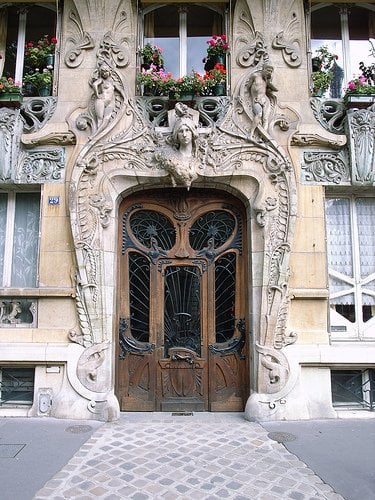
Queen Anne-This style came from England. It had low arches, a deep porch and dark sides. The sides can be stone or brick, giving it a warm feeling.
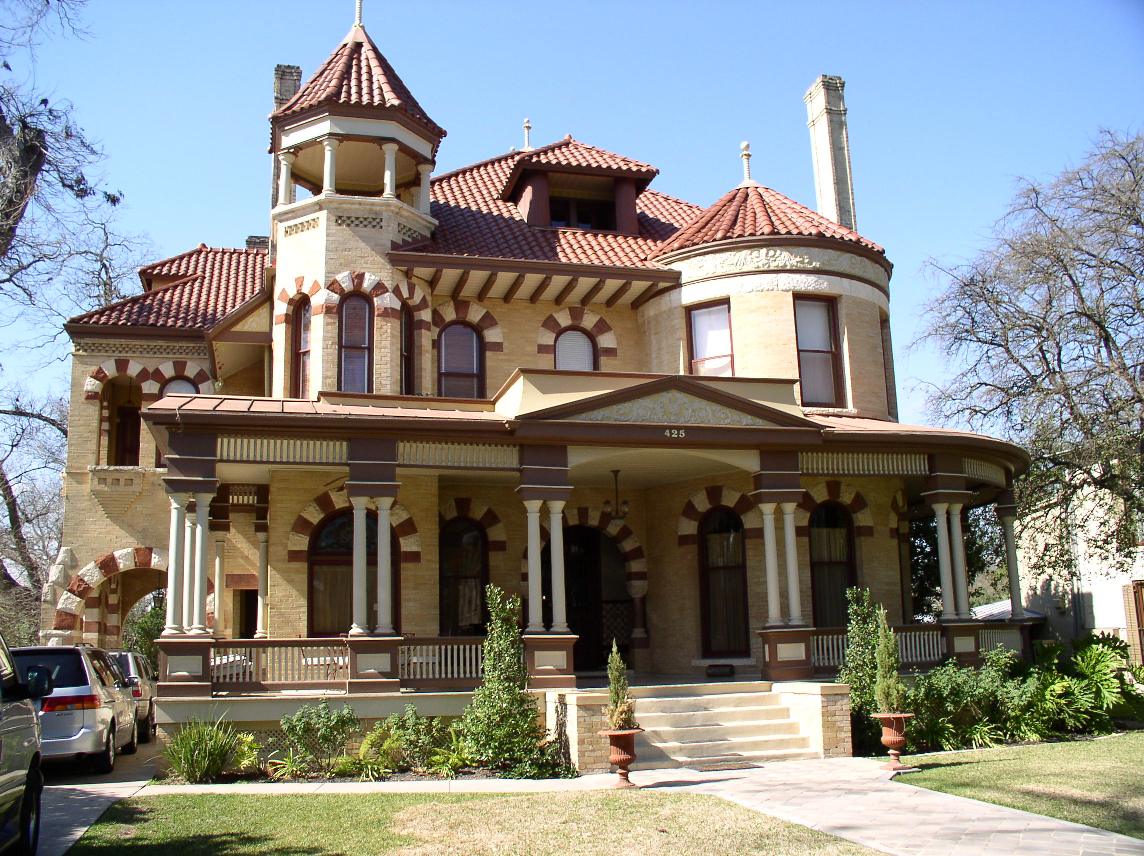
Tudor Style- This was applied to several fifteenth and sixteenth century homes.

Dutch Style-Always have a roof. It had a shed dormer.

Spanish Style- These are made of cement or stucco. There are details in the woods and they are mainly found in Western U.S.
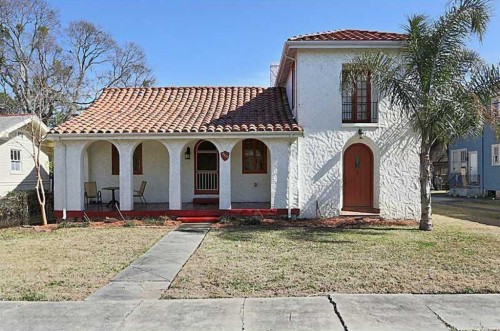
Prairie Style- Designed by Frank Lloyd Wright. They have low lines with open balconies and spreads of windows.

Ranch Style- These homes are long and low, usually having only one floor.

International (Modern) Style- It's a twentieth century creation. They look like cubes or boxes put together.The roofs can be flat or single sloped, often the homes have balconies.

Split-Level House- The first floor lays on more than one level, You must either go up or down. The garage is on a lower level. Somme of them have cellars.
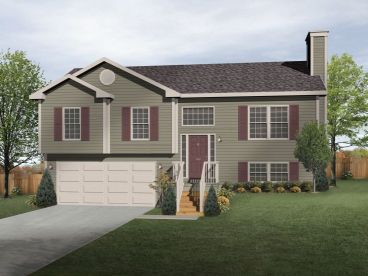
Rustic Style- These homes give you the feeling of woods, lakes and outdoors. They are often an environmental home or a vacation home.

Chalet/Alpine Style- It has eaves that overhang. They are often found in regions in North America.
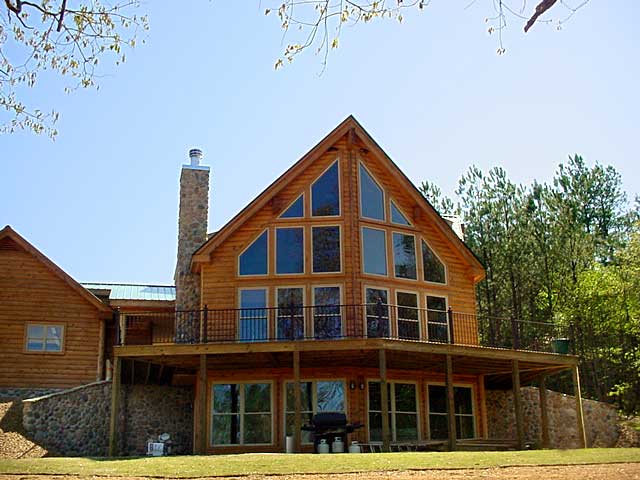
A-Frame House- These were started to be made in the 1950's.They are shaped as an A. Some A-Frame homes have balconies.

Dome Home- They are made of very light but strong triangular panels arranged in the shape of a hemisphere.

Solar House- They are designed to work with nature. They use the suns energy to their advantage. There are active and passive.

Earth Sheltered House- They are sometimes called underground homes.The roof may be covered with a layer of earth.They have a long low narrow shape, Windows face the south for sunlight.

Manufactured Housing- They are built in a factory and then transported by truck. They are delivered in sections that can be assembled. The costs are lower and so is construction time.

Mobile Home- It is factory built, they are sometimes called trailers. They can be put in a trailer park or on private land.
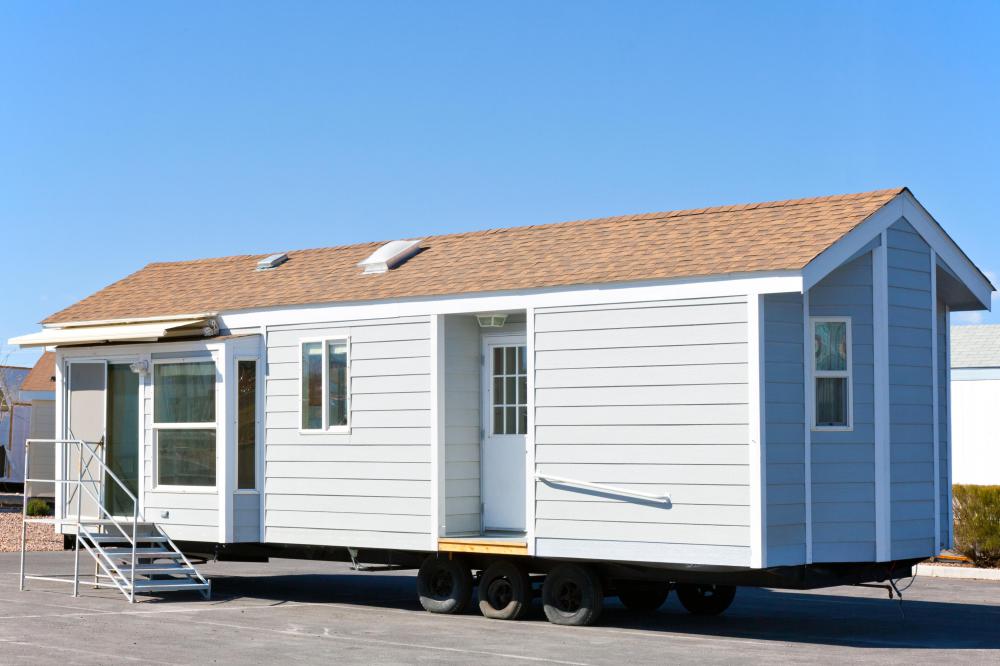
Duplex Style- It combines two housing units. The two units can be next to each other or on top/bottom of the other. It can also be called double Decker house.

Neo-Electric Home- Takes techniques from different houses. Usually made with vinyl or imitation stone. They were constructed in the 1960's or later.

High-Rise Apartments-Three or more living units put together. They are often stacked on top of one another They are built in congestive areas to save space.

Bungalow Style- They have a low pitched roof and are usually 1-1 1/2 stories. They often have a large front porch and an open floor plan. The siding is often stucco but can vary.
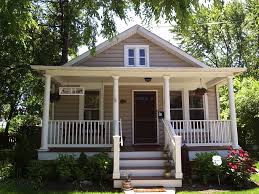
Prairie House- It's designed by Frank Lloyd Wright. These homes have long low lines with open balconies and spreads of windows. They have a low pitched roof with eaves.


Saltbox House- Traditionally there is a tall window faced South to capture the sun. There is a sloping roof nearly reaching the ground, this offers protection from the cold. They have pitched roofs that slope downward.

Garrison House-The second story overhangs the first story of this house. It usually has a narrow wooden clapboard siding.

Georgian House- They have classic-inspired details around the door. The roofs are pitched, Several chimneys rise from the inside. Their siding can be wood or brick.

Federal Style- They have many classic details. They have low pitched roofs and windows on the lower level are taller than those above. They have a low pitched or flat roof.

Greek Revival- They were inspired by a classic temple.

Cape Cod- These homes have steeply pitched roofs. They are normally sided with with wood shingles, but today commonly have clapboard siding.

Gothic Revival- This style was popular in the nineteenth century. The house had detail from mid evil Gothic cathedrals. They had high pitched roofs, elaborate trim and pointed arches.

Row House- These homes are built on long narrow properties. They have narrow fronts and several stories.Today they are more commonly called town homes.
Italian Villa- Quoins run run up corners of the houses. They all used classic columns of pilasters over doors and windows.They came to America in the 1830's and remained popular through the end of the century.

Stick Style- It has decorative woodwork, especially for porches and around doors and windows. There are brackets supporting the projection eaves of roofs.

Art Nouveau-These buildings will have human faces, plants and flowers all over them.They can be stucco or cement and and can have stain-glass.

Queen Anne-This style came from England. It had low arches, a deep porch and dark sides. The sides can be stone or brick, giving it a warm feeling.

Tudor Style- This was applied to several fifteenth and sixteenth century homes.
Dutch Style-Always have a roof. It had a shed dormer.

Spanish Style- These are made of cement or stucco. There are details in the woods and they are mainly found in Western U.S.

Prairie Style- Designed by Frank Lloyd Wright. They have low lines with open balconies and spreads of windows.

Ranch Style- These homes are long and low, usually having only one floor.

International (Modern) Style- It's a twentieth century creation. They look like cubes or boxes put together.The roofs can be flat or single sloped, often the homes have balconies.

Split-Level House- The first floor lays on more than one level, You must either go up or down. The garage is on a lower level. Somme of them have cellars.

Rustic Style- These homes give you the feeling of woods, lakes and outdoors. They are often an environmental home or a vacation home.
Chalet/Alpine Style- It has eaves that overhang. They are often found in regions in North America.

A-Frame House- These were started to be made in the 1950's.They are shaped as an A. Some A-Frame homes have balconies.

Dome Home- They are made of very light but strong triangular panels arranged in the shape of a hemisphere.

Solar House- They are designed to work with nature. They use the suns energy to their advantage. There are active and passive.
Earth Sheltered House- They are sometimes called underground homes.The roof may be covered with a layer of earth.They have a long low narrow shape, Windows face the south for sunlight.
Manufactured Housing- They are built in a factory and then transported by truck. They are delivered in sections that can be assembled. The costs are lower and so is construction time.

Mobile Home- It is factory built, they are sometimes called trailers. They can be put in a trailer park or on private land.

Duplex Style- It combines two housing units. The two units can be next to each other or on top/bottom of the other. It can also be called double Decker house.

Neo-Electric Home- Takes techniques from different houses. Usually made with vinyl or imitation stone. They were constructed in the 1960's or later.

High-Rise Apartments-Three or more living units put together. They are often stacked on top of one another They are built in congestive areas to save space.
Bungalow Style- They have a low pitched roof and are usually 1-1 1/2 stories. They often have a large front porch and an open floor plan. The siding is often stucco but can vary.
Subscribe to:
Posts (Atom)